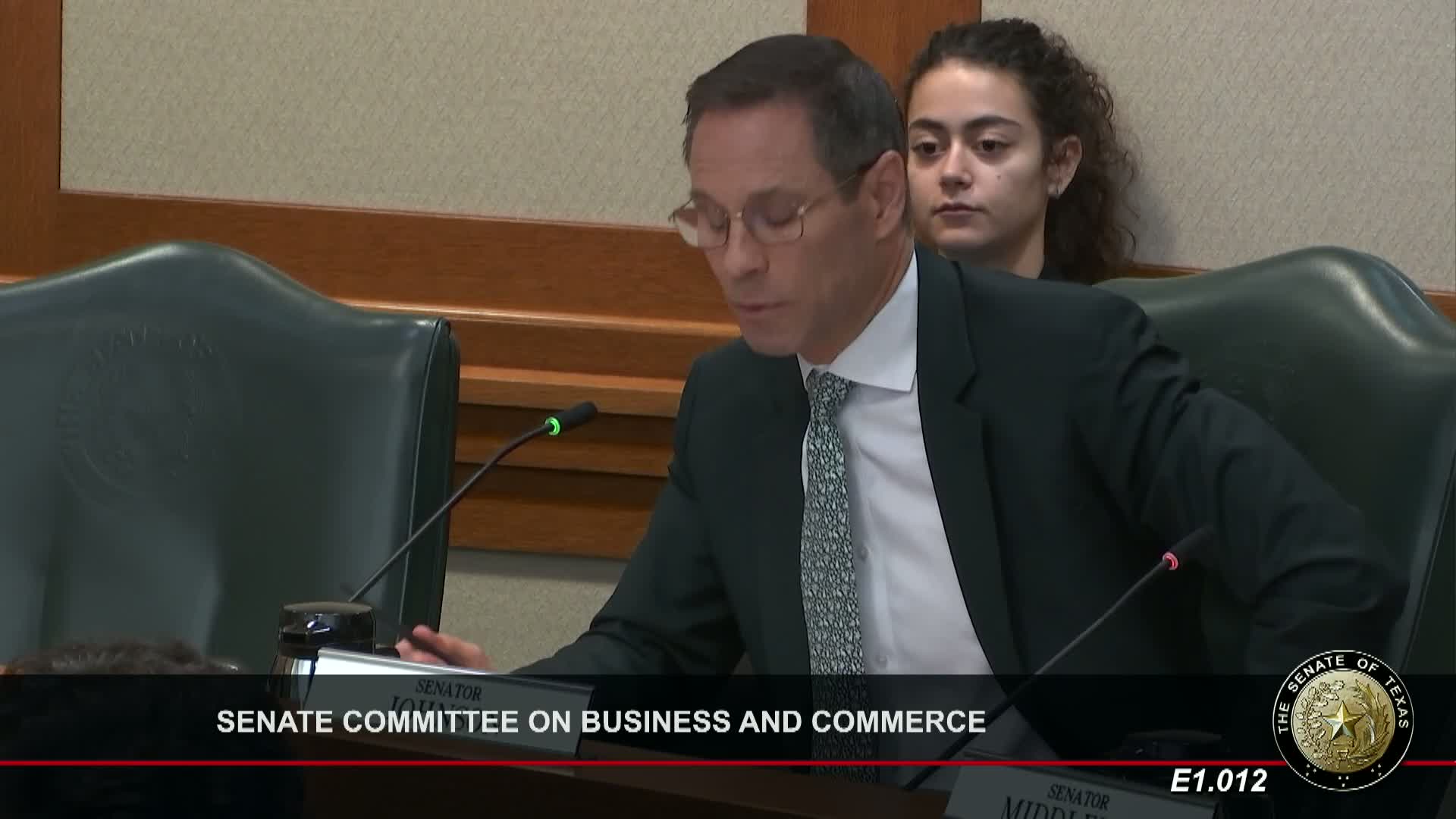Committee advances a major energy-efficiency update; bill raises utility goals, removes emergency load-management credit
April 15, 2025 | Committee on Business & Commerce, Senate, Legislative, Texas
This article was created by AI summarizing key points discussed. AI makes mistakes, so for full details and context, please refer to the video of the full meeting. Please report any errors so we can fix them. Report an error »

Senators considered a committee substitute to Senate Bill 29 94 that would update Texas’s utility-run energy-efficiency framework and raise multi-year savings expectations for utilities and retailers.
Sponsor Senator Johnson told the committee the bill modernizes rules that were written two decades ago and transfers emphasis from emergency load-management credits and population-growth formulas to measurable, everyday savings achievable through building upgrades, weatherization and targeted customer programs. The committee substitute sets minimum percentage savings goals by utility size and requires an annual increase (the substitute sets an incremental increase target of 2.5 percent year over year for multi-year goal-setting, with portfolio-level cost-effectiveness assessments rather than program-level gatekeeping). The substitute also changes how utilities measure demand-reduction goals (tying counts to premises served) and increases minimum set-aside spending for low-income programs (the substitute includes a 15 percent baseline for low-income expenditures with flexibility to exceed it).
Supporters included the Association of Electric Companies of Texas, energy-efficiency advocacy groups (SPEAR, ACEEE-affiliated research cited in written testimony) and environmental groups that urged stronger programs and larger low-income set-asides. Public witnesses described the financial benefits of efficiency for household budgets and grid reliability; Public Citizen and the Sierra Club urged higher ambitions while accepting the committee substitute as a step forward. Industry trade groups and utilities (represented by AECT) testified in support of the committee substitute as a pragmatic step that modernizes the program and preserves the role of TDUs and REPs.
Some advocates asked for shorter statutory reexamination intervals and stronger long-term goals; the committee substitute moves the review timeline but includes a multi-year pathway and performance incentives. The committee accepted the committee substitute language for consideration and left the bill pending for additional work.
Ending: Committee testimony emphasized the bill’s potential to reduce peak demand, lower bills for consumers and expand targeted low-income weatherization and upgrade programs. Senators left the measure pending to resolve final technical changes and statutory review timelines.
Sponsor Senator Johnson told the committee the bill modernizes rules that were written two decades ago and transfers emphasis from emergency load-management credits and population-growth formulas to measurable, everyday savings achievable through building upgrades, weatherization and targeted customer programs. The committee substitute sets minimum percentage savings goals by utility size and requires an annual increase (the substitute sets an incremental increase target of 2.5 percent year over year for multi-year goal-setting, with portfolio-level cost-effectiveness assessments rather than program-level gatekeeping). The substitute also changes how utilities measure demand-reduction goals (tying counts to premises served) and increases minimum set-aside spending for low-income programs (the substitute includes a 15 percent baseline for low-income expenditures with flexibility to exceed it).
Supporters included the Association of Electric Companies of Texas, energy-efficiency advocacy groups (SPEAR, ACEEE-affiliated research cited in written testimony) and environmental groups that urged stronger programs and larger low-income set-asides. Public witnesses described the financial benefits of efficiency for household budgets and grid reliability; Public Citizen and the Sierra Club urged higher ambitions while accepting the committee substitute as a step forward. Industry trade groups and utilities (represented by AECT) testified in support of the committee substitute as a pragmatic step that modernizes the program and preserves the role of TDUs and REPs.
Some advocates asked for shorter statutory reexamination intervals and stronger long-term goals; the committee substitute moves the review timeline but includes a multi-year pathway and performance incentives. The committee accepted the committee substitute language for consideration and left the bill pending for additional work.
Ending: Committee testimony emphasized the bill’s potential to reduce peak demand, lower bills for consumers and expand targeted low-income weatherization and upgrade programs. Senators left the measure pending to resolve final technical changes and statutory review timelines.
View full meeting
This article is based on a recent meeting—watch the full video and explore the complete transcript for deeper insights into the discussion.
View full meeting
